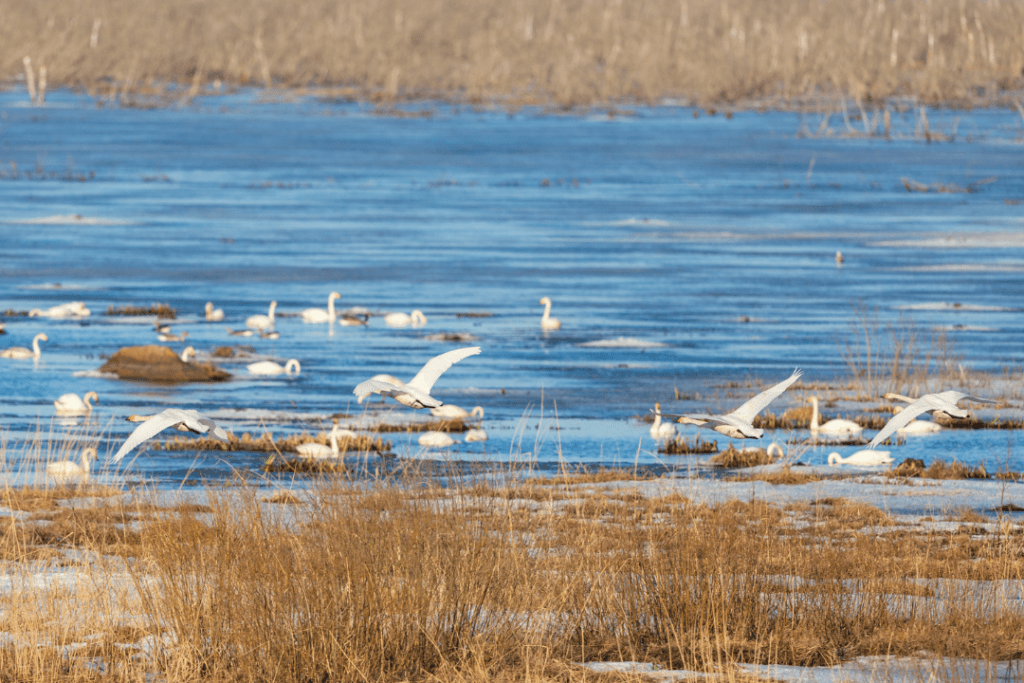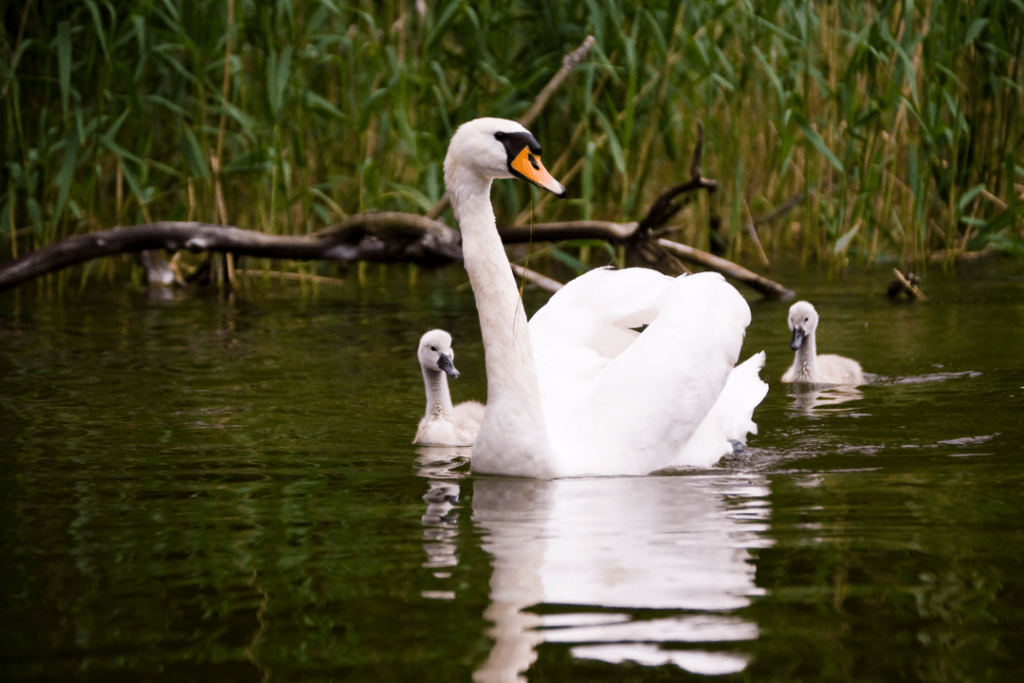In the world of animal nomenclature, there are few things as fascinating as group names. These unique and often poetic terms can provide insight into the behavior and characteristics of different species, as well as offer a window into the cultural history of our language.
In this article, we’ll be exploring the group name for one of the most elegant and majestic creatures in the animal kingdom: the swan.

The Basics of Swan Group Names
Before we dive into the specifics of swan group names, let’s first define what a group name is and why they exist. Group names are terms used to describe a collection of animals that are the same species. They offer a way to refer to a group of animals in a particular location or to describe their behavior, such as during migration.
Swans, like many other animals, have unique group names that are both evocative and informative. These group names are often inspired by the appearance or behavior of the animal in question, and they offer a glimpse into the rich folklore surrounding these magnificent birds.
The Common Group Name for Swans: A "Bevy"
When it comes to swans, the most commonly used group name is a “bevy.” This term is both lyrical and descriptive, conjuring up images of a group of graceful swans gliding through the water.
The origin of the word “bevy” as a group name for swans is uncertain, but it has been in use for centuries. Some theories suggest that it may be derived from the Middle English word “beve,” which means “a drink.” Others believe that it may be related to the French word “beau,” which means “beautiful.”
Whatever its origins, the term “bevy” remains a popular and evocative way to describe a group of swans.
The Origin of "Bevy"
As we’ve mentioned, the origin of the term “bevy” as a group name for swans is uncertain. However, there are several interesting theories and stories surrounding its creation.
One theory suggests that “bevy” may have been inspired by the behavior of swans when they are gathered around a watering hole. Like a group of people gathered around a drink, the swans may have seemed to be enjoying a “bevy” together.
Another theory suggests that “bevy” may have been derived from the French word “beau,” which means “beautiful.” This theory suggests that the term was used to describe the elegant and graceful movements of a group of swans.
Despite its uncertain origins, the term “bevy” remains a beloved and enduring group name for swans.
Other Names for Groups of Swans

While “bevy” is the most commonly used group name for swans, there are many other terms that have been used to describe these magnificent birds over the years. Here are just a few:
- A wisdom of swans
- A bazaar of swans
- A ballet of swans
- A wedge of swans
- A regatta of swans
- A lamentation of swans
- A team of swans
- A game of swans
- A bank of swans
- A whiteness of swans
- A drift of swans
- A school of swans
- A string of swans
- A colony of swans
- A pod of swans
These terms offer a glimpse into the rich cultural history surrounding swans, as well as offering a colorful and evocative way to describe these birds.
What Is A Pair Of Swans Called?
Swans are typically monogamous, with pairs of swans often staying together for life. As such, there are several terms used to describe a pair of swans. These include:
- A couple of swans
- A pair of swans
- A pen and cob (with the “pen” being the female and the “cob” being the male)
What is a Flock of Swans in Flight Called?
When swans take to the air, they can be a breathtaking sight to behold. But what do we call a group of swans in flight? The answer is a “wedge” or a “skein” of swans.
A “wedge” of swans refers to a V-shape formation that the birds often take when flying. This formation is thought to help reduce wind resistance and make it easier for the birds to navigate.
A “skein” of swans, on the other hand, refers to a more disorganized group of birds that are flying in close proximity to each other.
How Many Swans are in a Flock?
The number of swans in a flock can vary depending on the location and time of year. During the breeding season, for example, swans will often stick to their pair and won’t gather in large groups. However, during migration or in winter when food sources are scarce, swans may gather in larger flocks.
Flocks of swans can range from just a few birds to several hundred. In some cases, flocks of thousands of swans have been observed.
Do Swans Flock Together in Groups?
As mentioned earlier, swans are typically monogamous and will mate for life. During the breeding season, they will often stick to their pair and won’t gather in large groups.
However, outside of the breeding season, swans may flock together in groups. This can happen during migration, when swans will often travel in flocks to conserve energy and increase their chances of survival.
Swans may also gather in larger groups in the winter when food sources are scarce. During these times, they will often congregate near open water sources and may even join other waterfowl species in search of food.
Why Do Swans Flock Together in Large Groups?
As mentioned, swans may gather in larger groups during migration or in the winter when food sources are scarce. But why do they do this?
There are a few reasons why swans might flock together in large groups. One is safety in numbers. By traveling or feeding in larger groups, swans can increase their chances of avoiding predators and defending themselves against potential threats.
Another reason is the availability of food. When food sources are limited, swans may need to compete with other birds for resources. By flocking together, they can increase their chances of finding enough food to survive.
What Do You Call a Group of Baby Swans?
Baby swans are called “cygnets,” and a group of cygnets is often referred to as a “brood” or a “clutch.”
Swans typically lay between 3 and 8 eggs at a time, and both the male and female will take turns incubating the eggs. Once the cygnets hatch, they will stay with their parents for several months as they grow and learn to navigate the world around them.

Do Swans Migrate?
Yes, swans are migratory birds and will often travel long distances to find food and breeding grounds. In North America, there are two main species of swans that migrate: the tundra swan and the trumpeter swan.
Tundra swans breed in the Arctic and subarctic regions of North America and travel to the southern United States and Mexico for the winter. Trumpeter swans, on the other hand, breed in the western United States and Canada and will often travel as far south as California for the winter.
During migration, swans may travel in large flocks and will often follow traditional migration routes. These routes are often dictated by the availability of food and suitable breeding grounds.
Why Group Names Matter
So why are group names important for animals? There are a few reasons.
One is that group names can help with identification. If we know that a particular group of animals has a specific name, it can help us to more easily identify that species and understand their behaviors and characteristics.
Group names can also help with communication. By using a specific group name, we can convey more information about the animals we’re talking about in a more concise way.
Finally, group names can help us to better appreciate the natural world. By using poetic and evocative names to describe animals and their behaviors, we can gain a deeper appreciation for the beauty and complexity of the world around us.
Conclusion
In conclusion, group names are an important part of our language and our understanding of the natural world. Swans, like many other animals, have unique and poetic group names that help us to better appreciate their beauty and complexity.
From the regal “bevy” to the mysterious “ballet,” swan group names offer us a glimpse into the rich history and folklore surrounding these beautiful birds. Whether we’re watching a “wedge” of swans take to the sky or marveling at a “brood” of cygnets swimming in a pond, the language we use to describe these animals adds depth and color to our world.
So the next time you spot a group of swans, take a moment to appreciate the unique and evocative language we use to describe them. And remember, there’s always more to discover in the fascinating world of animal group names.

James has always been an avid outdoorsman. Since a kid, he kept a journal of all the different birds and species he saw. Now he wants to share his passion with other birders with Happy Birding!
